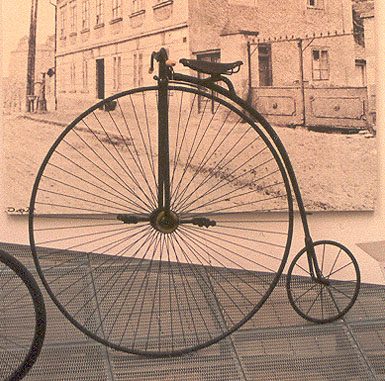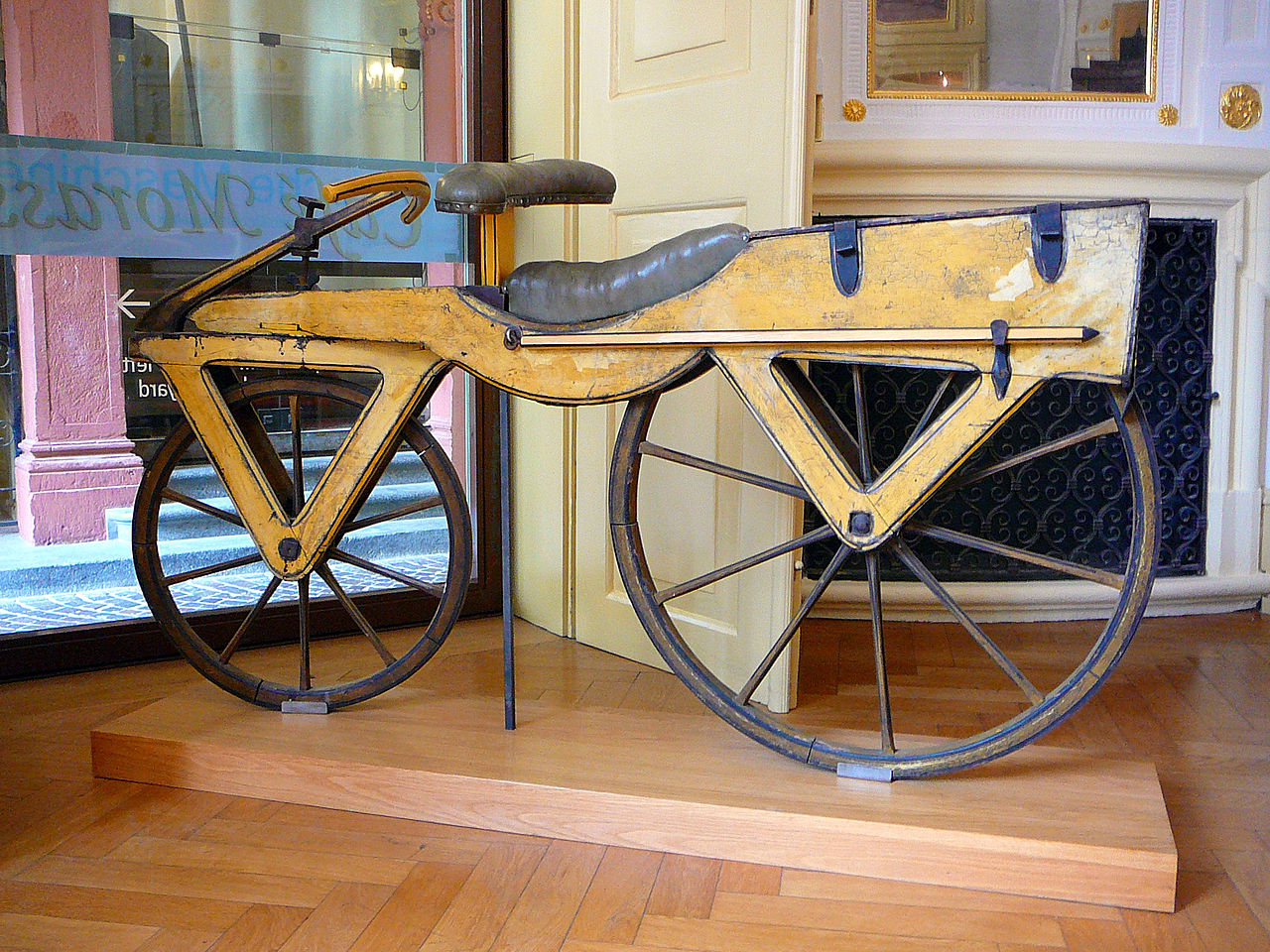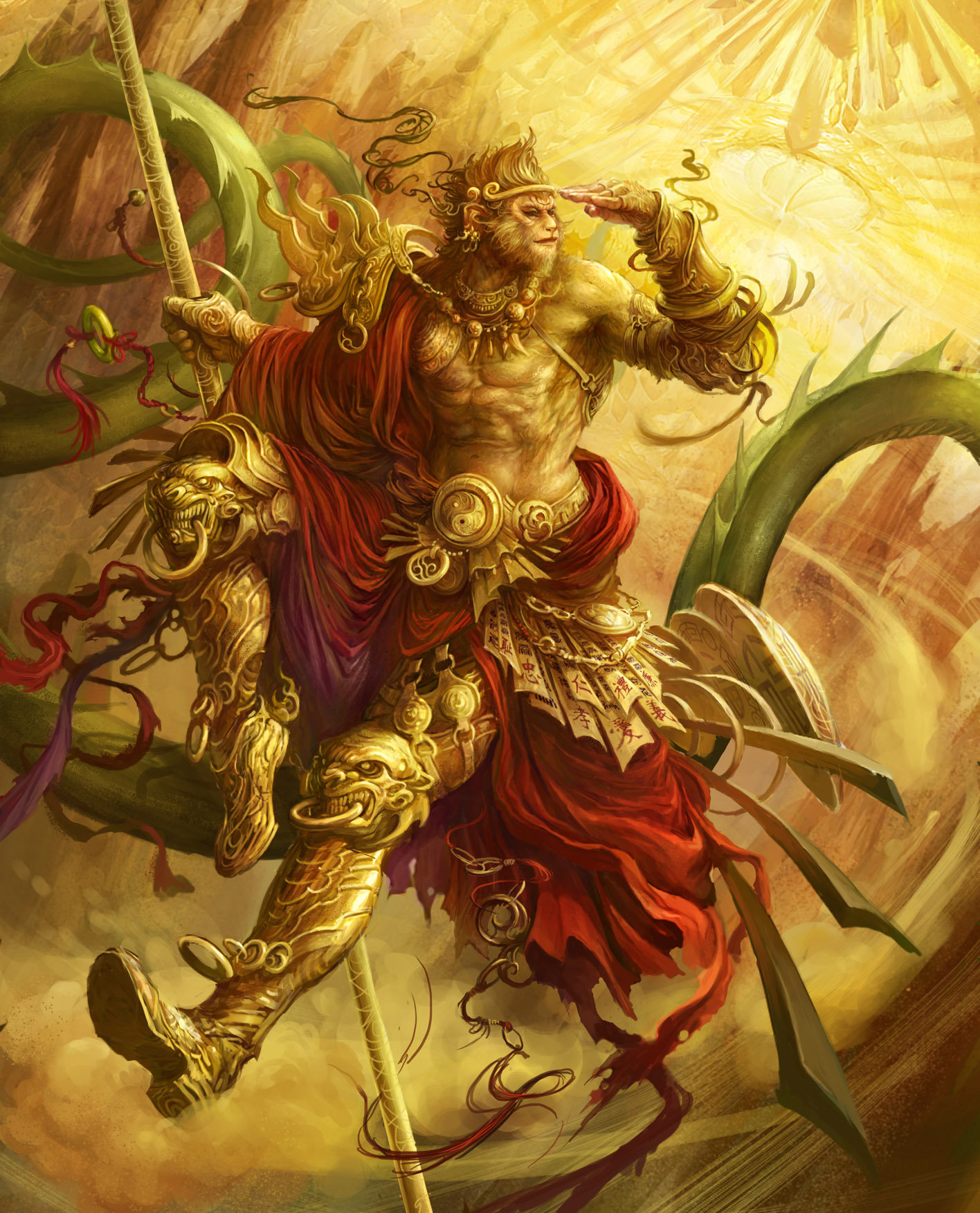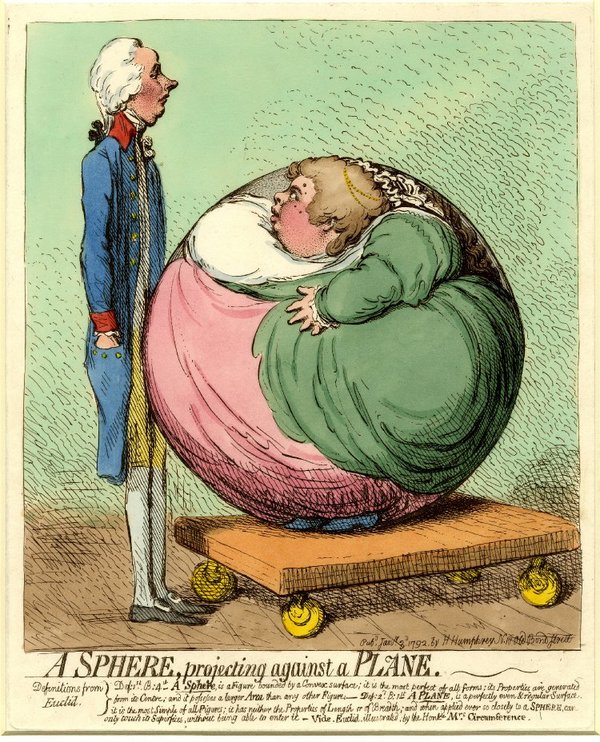Karl von Drais created the first bike ever in 1813. Karl was an unconventional German nobleman from a pre-eminent family in Karlsruhe.
Contents
Who Made The First Bike Ever?
Grand Duchy of Baden gave Karl von Drais his job. Of course, just like all great inventions – the first bike ever was invented to fulfil a purpose.
Karl von Drais was a wood owner in need of a faster way to check out his territory. He needed a human-powered vehicle to facilitate his regular inspection tours of the land he oversaw.
To help him do his job faster, Karl has built a first-ever mechanical four-wheeled transportation device. On top of that, it could transport between 2-4 passengers.
This four-wheeled contraption required one or more drivers. While one driver worked on a crankled axle with their legs, another driver had to steer it using a tiller.

The first bike ever, a wooden “Draisine” from 1820.
By Gun Powder Ma – Own work, CC BY-SA 3.0.
What Was The First Bike Ever Made?
Moreover, in 1817, Karl proposed the concept of the first bike ever, the “laufmaschine” (running machine). Thanks to Karl von Drais, this invention became the first-ever human-powered vehicle.
Karl’s invention was “draisine”. Notably, it was also called a “dandy horse”, or “velocipede”. Because of the resources available, the first-ever bicycle was wooden.
To be sure that it can be driven, Karl implemented iron tires and two small chariot wheels. Besides, a cushioned seat was on top of a perch.
The get the first-ever bike going, it needed to be pushed. In other words, the first-ever driver of the first bike ever needed to push itself and the bike of the ground, using their legs.
Additionally, you needed to steer it by turning a long pivoting pole. As a result of the pole turned, the front wheel could go left or right.
This ancient bike weighed 50 pounds (23kg). Due to it being an early day invention, it had no gears or pedals – just pure human power to propel it.

By Wilhelm Siegrist (1797-1843?) – Drais’ 3-page printed description of 1817 (in public libraries), Public Domain.
What Preceded The First Bike Ever
Soon enough, this ancient version of the bike became known as the hobby-horse.
As it grew in popularity, in 1818, Denis Johnson improved the idea and made it commercially available. Early hobby-horse sold for 8 Pounds, which was a considerable amount of money for the early 19th century.
Because it was a new invention, only wealthy families could afford to ride the first editions of early bicycle versions – the hobby horse.
Hoping to increase the speed of hobby-horse, Johnson’s implemented a dip in the centre of his machine. Moreover, it allowed him to use bigger wheels, which produced higher speeds.
In January of 1818, Drais got his first patent. Consequently, Drais obtained recognition from the French patent office too, for Louis Dineur.
However, the craze of hobbyhorses would soon come to an end, mainly due to the many accidents on the road.
Hobbyhorses were a street menace to pedestrians and were therefore banned from the sidewalks.
What Was The First Two-Wheeled Bicycle Ever?
The phrase “bicycle” was first launched during the 1860s. Uniquely, the word “bicycle” depicted the first bike ever.
Truly, it was a remarkable invention, a two-wheeled vehicle with pedals and engineered drive.
Pierre Michaux is responsible for the bicycle craze on the streets of Paris. Because Micheaux revolutionized the velocipedes, people become more receptive about it.
Specifically, the bike became more popular because people no longer needed to push themselves from the ground with their feet.
Correspondingly, you needed to use pedals and handles to drive the first-ever two-wheeled vehicle.
Michaux was a metalworker from Champs-Elysees. Moreover, Michaux built iron parts for the first-ever carriage trade.
Equally, this first-ever 2-wheeled vehicle had pedals and cranks to the front end.
Because of this approach, it has changed it from being a light auxiliary rail vehicle (draisine) to an exciting everyday transportation mode.
Weight and Price of the First-Ever Bike
The first attempt at first bike ever weighed about seventy pounds (70 kg) and cost a small fortune of 250 francs. The Michaux machine caught on fast.
Additionally, fancier models incorporated a first-ever bike braking mechanism.
The first-ever braking mechanism was activated by rotating a handlebar. As a result, an iron string pulled a metal spoon, touching the metal part of the rear wheel.

By Unknown – English Mechanic, Public Domain.
Who Were The World’s First Velocipedists
Pierre’s four sons are the world’s first velocipedists, as they have been the first-ever individuals to take a bike ride.
The first-ever velocipedist machine looked a lot like Johnson’s hobby horse. Early bike manufacturers used bolts and metal to created their products.
Pierre placed the bike’s wheels much more closely together. However, the wheels were slightly larger than the original concepts.
By the same token, the rear wheel measured about thirty-four inches, whereas the front one was a few inches larger, for improved pedalling.

By Pierre Lallement – see above, Public Domain.
Was The First Bike Design Actually Stolen?
The first-ever patent for a bicycle has its own conspiracy theories. Generally speaking, Pierre Michaux never revealed any details regarding his claim, spurring additional doubt.
However, it turned out that the Olivier brothers, Aime and Rene, were in charge of the first bicycle ever product development.
In essence, the Olivier brothers were the first-ever investors in a bicycle project with a sum of 50 000 francs.
The First-Ever Bicycle Patent
Although this may be true, it turns out that the first-ever bicycle patent was submitted in the United States in April 1886. Furthermore, that was one year before Michaux launched his idea.
However, it turned out that Pierre Lallement admitted to creating the bike design in 1862.
Given these points, it turns out that Rene and Aime have come across Lallement’s prototype of a bike following one of his public exhibitions.
The Olivier brothers became so overwhelmed with the device that they wanted Michaux to start producing them commercially.
As a result of this early bicycle trade, the first motorized two-wheelers later came to life.

By Agnieszka Kwiecień (Nova) – Own work, CC BY-SA 3.0.
Historical Evolution Of The Bicycle
The first-ever touring bicycle came from Europe in the 1920s. Altogether, it had a lightweight frame, aluminium alloy parts, and derailleur gears.
Henceforth, by the late 1960s, Americans sought out the even lighter and more versatile ten-speed bicycles. Uniquely, it has sparked a boom in the history of bicycles.
Since then, the versatile mountain bike (MTB), made in California, has brought cycling back to life.
Another key point in first-ever mountain bike popularity was its lightweight and multiple gears.
It represented a bi-wheeled comfortable transportation device, used to get to any location.
Bicycle – an environmentally friendly vehicle
Nowadays, overly populated cities promote bicycles as an environment-friendly vehicle. Frequently, many people are choosing bikes over cars, to help keep the environment sustainable.
At the same time, technological advances helped to further launch the bicycle’s popularity.
Together with the freewheel, calliper or coaster brakes, and the three-speed hub gear, bikes soon became super-practical.
All things considered, due to tech advancements and low manufacturing costs, bicycles became globally affordable and loved.
If you got tired of riding a bike, check out the first-ever person killed in Game of Thrones.




